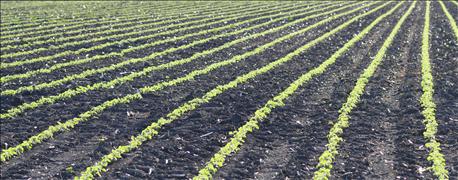October 10, 2016

Here’s a scenario for you: Let’s say a landowner wants to install tile to improve drainage in three wet areas totaling 20 acres. The Farm Service Agency Form CCC-156 states, “This farm does not contain a wetland.”
The question: Can you bring the tiling contractor in immediately and get the work done?
Believe it or not, the answer is no. As it turns out, the statement “This farm does not contain a wetland” is meaningless unless a “certified wetlands determination” has been completed by the Natural Resources Conservation Service.

A certified wetlands determination is an analysis by NRCS to see if a farmed wetland exists. The first step is a review of the USDA Soil Survey of the property. Hydric soils (which form under “wet” conditions) must be present for it to be considered a farmed wetland.
The second step involves the analysis of aerial photographs of the cropland taken midsummer in “normal weather” during years closest to 1985 to see if there are any “signatures” of wetness. These may be darker areas in the fields, drowned crop areas or other signs of crop stress. If those signatures exist, NRCS personnel must do an on-site inspection to confirm that hydric soils are present and to determine if other conditions exist that indicate areas of wetlands on the farm. The existence of wetland plants is considered during the on-site review.
To begin the wetlands determination process, you will need to complete Form AD-1026 at the local FSA office. This analysis cannot be done by the local county personnel — it must be completed by personnel outside your local county to eliminate any potential conflicts of interest.
Suppose you just go ahead and drain the wet areas. What can happen? If the FSA or NRCS determines you performed drainage activities in a farmed wetland without the certified wetlands determination being completed, it can impose penalties. The landowner will lose all farm program payments, including any crop insurance subsidies, on all farmland interests he or she owns. The tenant farmer will also lose all farm program payments, including crop insurance subsidies, on all farmland he or she operates.
What are your options?
Say NRCS determines that your farm contains farmed wetlands and you either want to or already have improved the drainage. What are your options?
• You can accept the decision and destroy the new tile or cancel the installation of new tile.
•You can go to mediation, which involves a disinterested third party reviewing the information and making a binding decision about the NRCS finding.
• You can purchase wetland acreage in another area as a substitute for your wetlands area, or you can construct a new wetlands area and trade. The trade ratio is normally in the range of 2.5 to 3 acres of wetlands for each acre you want to tile.
• If you believe the farmland was properly drained prior to 1985, you can appeal the NRCS decision to the local county FSA committee. The local committee has no authority other than to recommend reconsideration, and NRCS and FSA can ignore their recommendation. However, this action gives you the opportunity to begin the appeal process. If the NRCS does not alter its wetlands determination, you can proceed with the appeal process. At this point, the process gets both interesting and frustrating because NRCS does not have to prove it is right. The landowner and farmer have to prove NRCS is wrong.
Check back next month for the next part of this series: how to gather information for the appeal.
Moody is president of Heartland Ag Group; Wauthier is vice president of Berns, Clancy and Associates; Wilke is a partner at Barber, Segatto, Hoffee, Wilke and Cate. All three are members of the Illinois Society of Professional Farm Managers and Rural Appraisers, whose members regularly contribute to this column. Have a farm management question or topic you’d like addressed? Email Carroll Merry at [email protected].
You May Also Like




